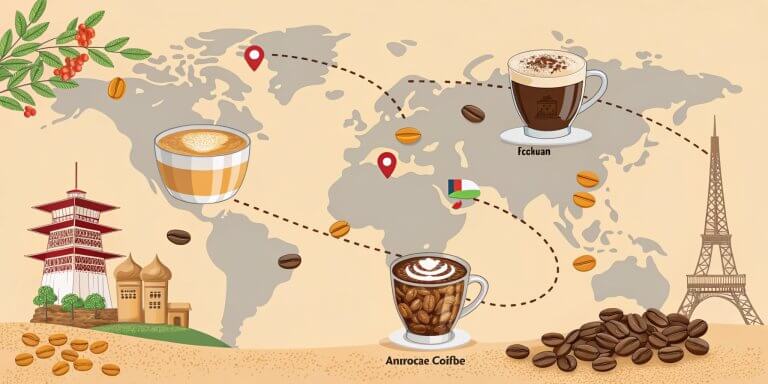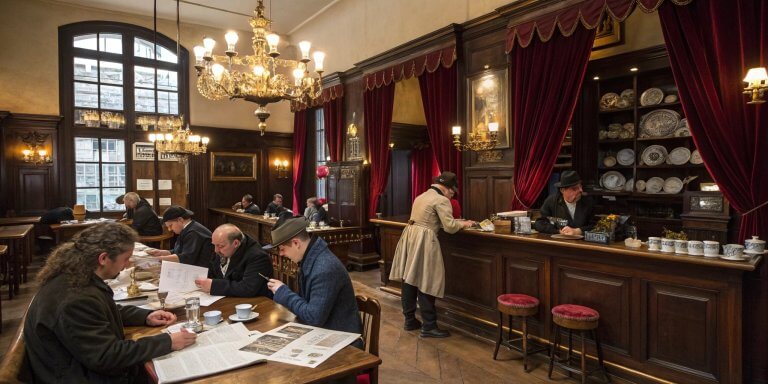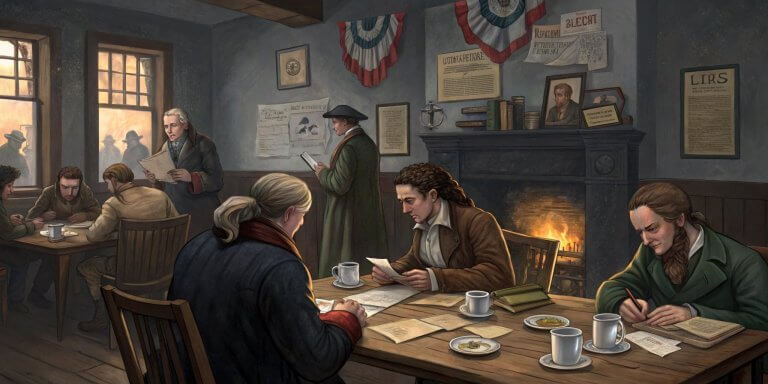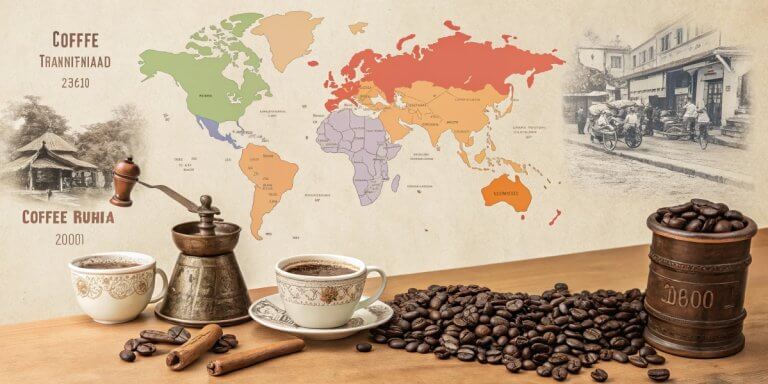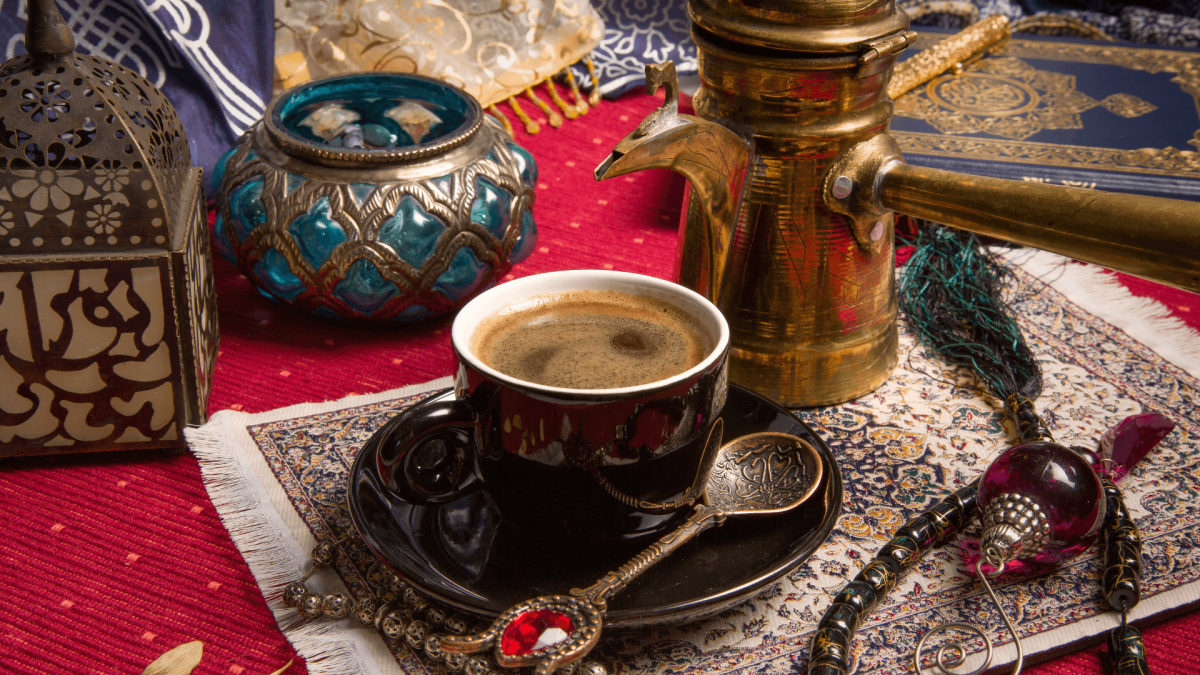
Coffee is more than a beverage; it’s a universal experience transcending borders and cultures. Around the world, people have embraced coffee in unique ways, creating distinct rituals and traditions that reflect their lifestyles, values, and histories. From Italy’s quick-shot espresso to Ethiopia’s ceremonial brew, coffee is celebrated in various forms that reveal the heart of each culture. This blog explores the global coffee culture and how different countries enjoy their favorite brew.
Origins of Coffee: From Ethiopia to the World
The journey of coffee begins in Ethiopia, where legend has it that a goat herder named Kaldi discovered the energizing effects of coffee beans after his goats ate the cherries from a coffee plant. Ethiopia remains a major coffee-producing country today, and the coffee ceremony is integral to its social and cultural fabric. The Ethiopian coffee ceremony is a ritual of hospitality, where coffee is brewed slowly using a jebena (a traditional clay coffee pot), and friends and family gather to enjoy the aromatic beverage together.
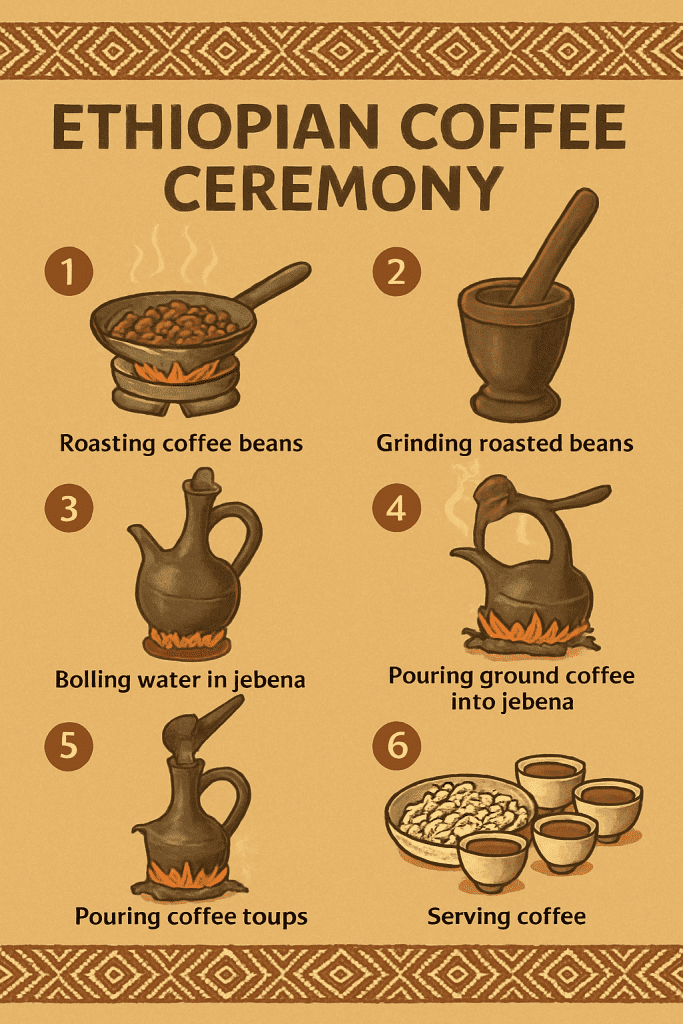
Ethiopian coffee ceremony steps
From Ethiopia, coffee spread to the Middle East, particularly Turkey, where it gained popularity during the Ottoman Empire. Turkish coffee, known for its solid and thick consistency, is brewed in a unique pot called a cezve and is often served with Turkish delight. The significance of coffee is so deeply embedded in Turkish culture that it has become a part of wedding traditions, where a bride-to-be serves coffee to her prospective in-laws, symbolizing respect and acceptance.
Coffee’s journey continued through Europe, where it quickly became a favorite. The coffeehouse culture took root in countries like Italy, France, and Austria, each adding its unique touch to how coffee was consumed.
Coffee Culture in Europe
Italy
Italy is synonymous with coffee, particularly espresso, which originated here. Italians take their coffee seriously, often enjoying it in small, strong shots. Espresso bars are a common sight in every city, and Italians prefer to drink their coffee standing up at the counter, savoring the experience before moving on with their day. Italian coffee culture emphasizes quality and tradition, with classics like cappuccino, macchiato, and ristretto being popular.
France
In France, coffee is more than just a morning pick-me-up—it’s a leisurely activity. French cafés, with their outdoor seating and slow-paced atmosphere, encourage people to take their time while sipping a café au lait (coffee with milk). Parisian cafés are often a hub for socializing, reading, or simply watching the world go by while enjoying a cup of coffee with a croissant.
Austria
Vienna is famous for its historic coffeehouses, which are cultural institutions in their own right. Here, people gather for long conversations over coffee, often paired with a slice of cake. The Viennese coffeehouse is an experience of indulgence and relaxation, with popular coffee drinks like the Wiener Melange (a mix of espresso and steamed milk).
Spain
In Spain, coffee is a staple of social life, fostering a sense of community. Whether it’s a café con leche (coffee with milk) in the morning or a strong cortado in the afternoon, Spaniards enjoy their coffee throughout the day. Coffee is often enjoyed alongside sweet pastries, like churros, in a leisurely fashion that emphasizes the communal aspect of coffee drinking.

Comparison of brewing methods
Coffee in the Americas
United States
In the United States, coffee culture has evolved from basic drip coffee to a more complex, specialty coffee scene. Major coffee chains like Starbucks were vital in introducing lattes, cappuccinos, and other espresso-based drinks to the mainstream. Today, the third-wave coffee movement is flourishing, emphasizing high-quality beans, artisanal brewing methods, and sustainable sourcing. This evolution is a result of the globalization of coffee culture, where local traditions are influenced by global trends.
Brazil
Brazil is the world’s largest coffee producer, and coffee plays a significant role in daily life, underscoring its importance. Brazilians enjoy cafezinho, a small cup of black coffee served throughout the day, or café com leite, similar to a latte. Coffee is deeply intertwined with Brazilian hospitality, and offering someone a cup is considered a welcoming gesture.
Colombia
Colombian coffee is renowned for its smooth, mild flavor, and the country’s coffee farmers are dedicated to producing some of the best beans in the world. The traditional Tinto, a small cup of black coffee, is a standard beverage in Colombia. Coffee also plays a crucial role in the country’s economy, with Colombian coffee often seen as a symbol of national pride and a significant contributor to the country’s export revenue.
Mexico
In Mexico, coffee is often brewed with cinnamon and piloncillo (unrefined sugar), giving it a rich and sweet flavor. Known as café de olla, this spiced coffee is famous during holidays and celebrations. It’s usually enjoyed with friends and family, reflecting the importance of community in Mexican coffee culture.
Coffee in the Middle East and Africa
Turkey
Turkish coffee is a symbol of hospitality and tradition. It is brewed slowly, resulting in a robust, unfiltered coffee typically served in small cups. A fascinating aspect of Turkish coffee culture is reading fortunes from the coffee grounds left at the bottom of the cup.
Ethiopia
Ethiopia is the birthplace of coffee, and the Ethiopian coffee ceremony is an elaborate affair that can last for hours. Coffee beans are roasted on an open flame, ground by hand, and brewed in a traditional jebena pot. The ritual emphasizes respect, hospitality, and the importance of community.
Egypt
Turkish coffee is famous in Egypt, and it’s often enjoyed in informal gatherings with friends and family, creating a warm and convivial atmosphere. Egyptians appreciate their coffee strong, usually with sugar, which is a conversation starter in social settings.
Morocco
In Morocco, coffee is often spiced with cinnamon, cardamom, and nutmeg, creating a flavorful and aromatic drink. Coffee is typically enjoyed in cafes or at home as part of a social gathering, where hospitality is essential.
Coffee Culture in Asia
Japan
Coffee has gained popularity in Japan, and artisanal coffee culture is thriving. Traditional kissaten (Japanese coffee houses) offer a nostalgic atmosphere where coffee is brewed with precision. Cold brew coffee is also trendy in Japan, focusing on clarity of flavor.
Vietnam
Vietnam is famous for its unique coffee, often brewed with a metal drip filter called a phin. Cà phê sữa đá, Vietnamese iced coffee with sweetened condensed milk, is a popular drink that balances robust and bitter coffee with a creamy sweetness. Egg coffee is another Vietnamese specialty, combining coffee with a frothy mixture of egg yolks and sugar.
Indonesia
Indonesia is known for its exotic Kopi Luwak (civet coffee), which is made using beans eaten and excreted by civet cats. Despite the controversy surrounding its production, Kopi Luwak remains a luxury item. Indonesian coffee is often brewed strong and consumed black.
India
In India, coffee is predominantly consumed in the southern regions, where South Indian filter coffee, or Kaapi, is famous. This rich and frothy coffee is brewed using a traditional metal filter and is enjoyed with breakfast or during social gatherings.
Coffee Culture in Australia and New Zealand
Australia
Australia has a thriving coffee culture known for its flat white—a velvety espresso-based drink with steamed milk. Australians are discerning coffee drinkers, and local artisanal coffee shops are preferred over significant chains. Coffee is a part of everyday life, with café culture flourishing in cities like Melbourne and Sydney.
New Zealand
Like Australia, New Zealand has embraced the flat white, and coffee is a significant part of social life. The country’s cafés are known for their cozy atmospheres, where people gather for coffee and conversation.
Scandinavian Coffee Culture
Sweden
In Sweden, fika—a coffee break enjoyed with pastries like cinnamon buns—is a beloved tradition. It’s a time to slow down, connect with friends or colleagues, and enjoy a cup of coffee. It’s an essential part of Swedish culture, promoting relaxation and togetherness.
Norway and Denmark
In Norway and Denmark, coffee is consumed daily, often black and without sugar. Scandinavian countries are among the highest consumers of coffee per capita, and coffee is a vital part of daily life, whether at home, in cafés, or during social gatherings.
Unique Coffee Traditions Around the World
Greece
In Greece, frappé—a frothy, iced coffee drink—is a popular choice, especially during the hot summer months. Coffee is an essential part of Greek social life, and people often linger in cafés for hours, catching up with friends over a cup of coffee.
Portugal
In Portugal, coffee is typically enjoyed as a bica, a strong espresso served in small cups. Café culture is deeply ingrained in Portuguese society, and it’s common to see people standing at the counter, quickly enjoying their coffee before continuing their day.
Finland
Finland has one of the highest per-capita coffee consumption rates in the world. Coffee is often enjoyed with pulla, a type of sweet bread, and it’s a central part of Finnish culture, especially during social events like coffee breaks at work or in saunas.
Cuba
Cuban espresso, or cafecito, is a small, sweet, and strong coffee integral to Cuban social life. Whether shared with neighbors or enjoyed after a meal, cafecito represents the warmth and hospitality of Cuban culture.
South Korea
South Korea has seen an explosion of modern coffee culture, with themed coffee shops and trendy, Instagram-worthy cafés popping up across the country. Instant coffee mixes are also stylish, offering busy professionals a quick and convenient coffee fix.
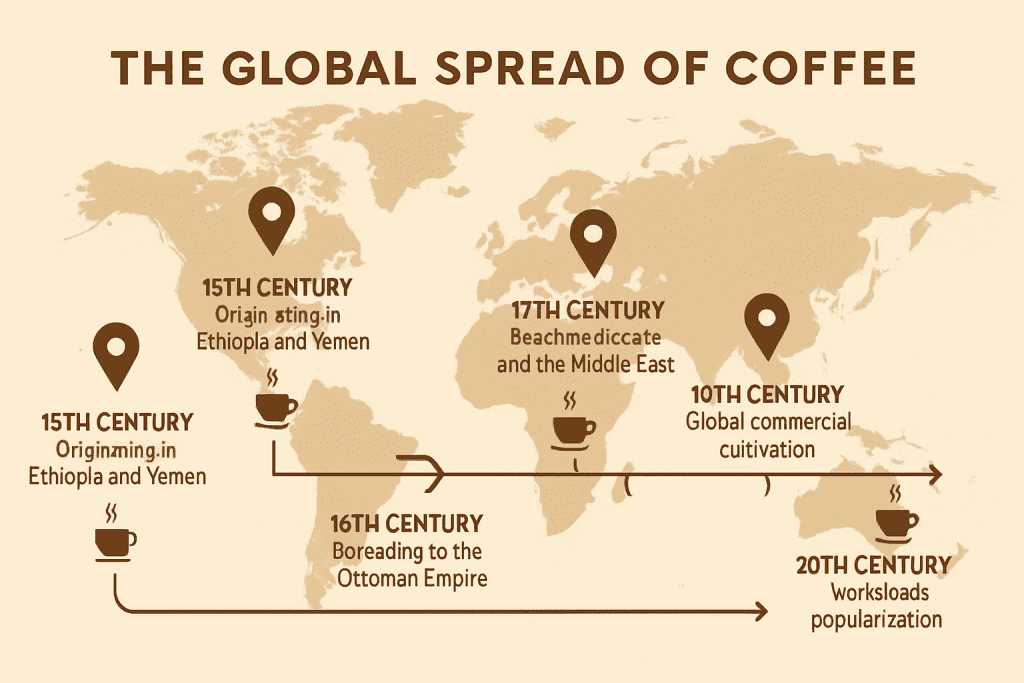
Timeline of coffee’s global journey
The Influence of Global Coffee Chains
Major coffee chains like Starbucks have spread coffee culture across the globe, influencing how people in various countries enjoy their coffee. However, traditional coffee cultures remain strong, with many regions balancing the influence of global chains with their own artisanal and heritage coffee practices.
Third-wave coffee shops have emerged in recent years, focusing on high-quality beans, ethical sourcing, and innovative brewing methods. This movement reshapes coffee culture, emphasizing sustainability and craftsmanship over mass production.
The Future of Coffee Culture
As global sustainability awareness grows, coffee production increasingly focuses on ethical sourcing, fair trade, and environmental sustainability. Consumers are becoming more conscious of where their coffee comes from, how it’s grown, and the conditions coffee farmers face.
The future of coffee culture may also see a rise in coffee alternatives, such as plant-based milk options, decaf choices, and innovative beverages like nitro coffee. As coffee continues to evolve, one thing is sure: its ability to bring people together, regardless of where they are.
Conclusion
From the bustling streets of Italy to the serene cafés of Japan, coffee has woven itself into the social and cultural fabric of countries worldwide. While the brewing methods, flavors, and traditions may differ, the underlying passion for coffee remains the same. Whether enjoying a rich Ethiopian brew or a frothy flat white in Australia, coffee is a global connector, bringing people together over a shared love for the drink. So next time you sip your coffee, take a moment to appreciate its journey across borders and cultures and how it unites people in every corner of the globe.

